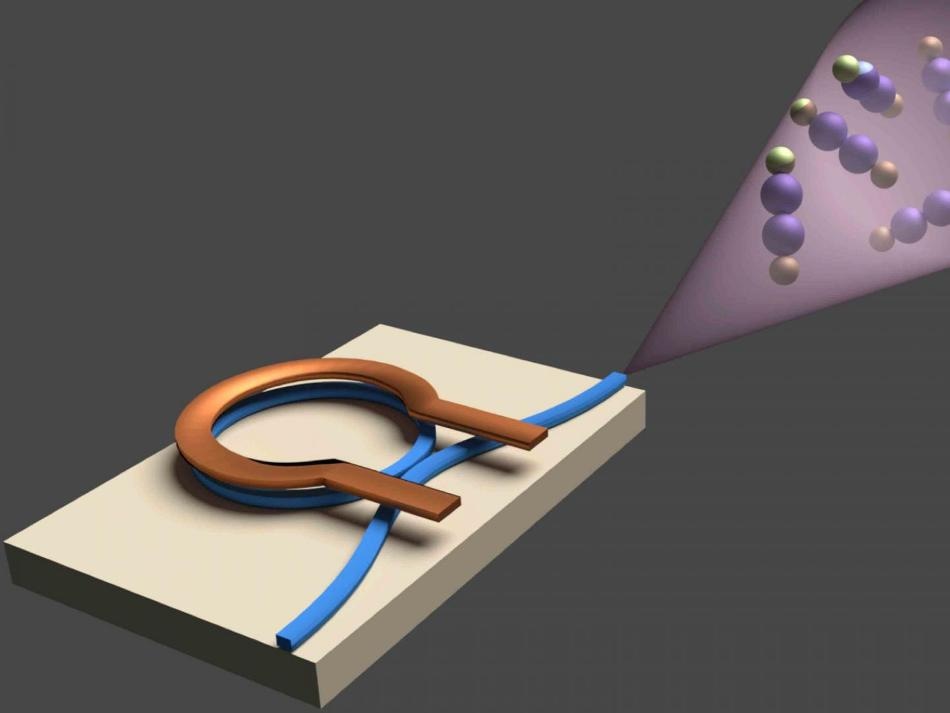May 24 2018
For the first time, scientists from Columbia Engineering have developed and operated a chip-based dual-comb spectrometer in the mid-infrared (mid-IR) range that avoids the need for moving parts and with the ability to obtain spectra in less than 2 μs.
 This is a schematic of silicon microresonator generating a frequency comb that samples molecules for chemical identification. (Image credit: Alexander Gaeta/Columbia Engineering)
This is a schematic of silicon microresonator generating a frequency comb that samples molecules for chemical identification. (Image credit: Alexander Gaeta/Columbia Engineering)
The system contains two mutually coherent, microresonator-based, low-noise frequency combs that span from 2600 to 4100 nm. This could pave the way for developing a spectroscopy lab-on-a-chip for performing sensing in real time on the nanosecond timescale.
“Our results show the broadest optical bandwidth demonstrated for dual-comb spectroscopy on an integrated platform,” stated Alexander Gaeta, senior author of the study, who is a David M. Rickey Professor of Applied Physics and of Materials Science. The study was reported in the Nature Communications journal on May 14, 2018.
It has been highly difficult to develop a spectroscopic sensing device on a chip with the ability to perform real-time, high-throughput detection of trace molecules. A few months earlier, groups headed by Gaeta and Michal Lipson, Higgins Professor of Electrical Engineering, became the first to miniaturize dual-frequency combs. They achieved this by integrating two frequency comb generators on a single millimeter-sized chip. They have strived to widen the frequency span of the dual combs, as well as to increase the spectrometer’s resolution by adjusting the lines of the comb.
In this study, the focus of the team was on the mid-IR range, which is ideal for the detection of trace molecules since its robust molecular absorption is ideally 10 to 1000 times higher than those in the near-infrared or visible range. The “fingerprint” of several molecules is effectively covered by the mid-IR range.
Two silicon nanophotonic devices were used as microresonators by the researchers to perform mid-IR dual-comb spectroscopy. The integrated devices developed by them allowed direct generation of broadband mid-infrared light and rapid acquisition speeds for defining molecular absorption.
Our work is a critical advance for chip-based dual-comb spectroscopy for liquid/solid phase studies. Our chip-scale broadband optical system, essentially a photonic lab-on-a-chip, is well-suited for identification of chemical species and could find a wide range of applications in chemistry, biomedicine, material science, and industrial process control.
Mengjie Yu, Lead Author
The Defense Advanced Research Projects Agency (W31P4Q1510015), the Air Force Office of Scientific Research (FA95501510303), and National Science Foundation (ECS0335765, ECCS1306035) supported the study. This research was partially carried out at the Cornell NanoScale Facility, a member of the National Nanotechnology Infrastructure Network, which is supported by the National Science Foundation (NSF) (grant ECS0335765).